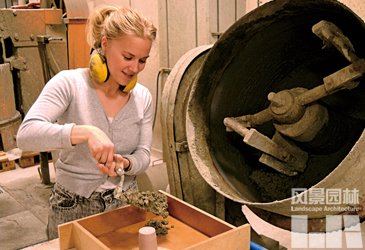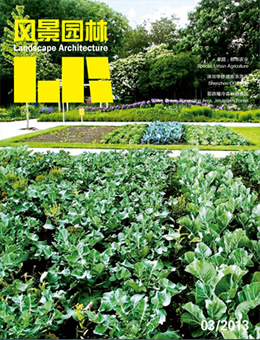Grey to Green
现今,世界正面临着空前的城市发展巨浪。而城市需要依靠自然的生态系统来正常运作。本项目旨在建设密集、绿色与可持续的城市。在未来,我们必须寻找将绿色结构融入城市的更有效的新道路。从绿色到灰色指的是一系列的可种植植被的铺路石。由于大多城市的非渗透表面都由铺路石构成,因而该产品与植被便可以灵活地整合在城市地面当中。系列由4片铺路石组成,每一片有不同数量的穿孔:1到8个穿孔供植被生长。铺在城市地面的绿化数量能够在不增加额外空间的前提下,轻松地进行定制与增加。
城市中有许多未破损的不渗透表面。而植被通常会在这些表面上自然生长,但它们都被看成是杂草。通过在铺路石上设计植被空间,植物便能够在这些不渗透表面上有充分的被接受的生长空间,因而不会被当成是杂草。这些铺路石与瑞典最常使用的铺路石规格相同,使其能够很好地融入城市现有道路系统,并反过来促进与绿化的相互作用。
提高植被的数量是积极的措施。例如:城市植被能够促进水合作用,帮助净化空气,处理二氧化碳,减少城市热岛,并增加城市居民幸福感,从而促成一个更健康、更持续的城市环境。
通过本项目,设计师研究城市中绿化的可行区域。在规划城市的众多不渗透表面时,设计师推进了能否进行绿化的地方边界,并志在引领思想的新方法。设计师并不划分绿色与灰色,而是将它们合二为一。考虑到今时今日世界城市发展的速度,设计师认为本项目对于城市与城市居民在未来的正常运作都具有重大的作用。
Right now, the world is facing the largest wave of urban growth in history. The cities depend on nature’s ecosystem to function properly. The aim is to build dense, green and sustainable. In the future we must find new ways to more efficiently integrate green structure into the cities. Green to Grey is a series of paving stones that can host vegetation. The product and the vegetation can flexibly be integrated on the paved urban floor as many of the cities impervious surfaces consists of paving stones. The series consists of four paving stones. Each tile has different amounts of perforation; from 1 to 8 spaces where vegetation is allowed to grow. The quantity of greenery on the paved urban floor can easily be customized and increased without taking a lot of extra space.
In the city there are many impervious surfaces that are not worn. On these surfaces it is common that vegetation starts growing spontaneously, but it is considered as weed. By designing a space for vegetation in the paving stones, the plants get an accepted place on these impervious surfaces, and will not be considered as weed. The paving stones have the same dimensions as the most commonly used paving stone in Sweden. This allows them to fit within the existing system and that, in turn, facilitates the interaction of greenery.
Increasing the quantity of vegetation is positive for several reasons. The vegetation in the city helps with water hydration, cleaning the air, taking care of CO2, reducing urban heat islands and increased well-being for the urban citizens. The result: a more healthy and sustainable city environment.
With this project I am questioning the allowed places for greenery in the city. Pushing the boarders for where it can be accepted or not, and aspiring on leading the way for a new way of thinking when planning the many impervious surfaces in the city. Not separating the green and the grey, but mixing them. Considering the rate of urban growth in the world today, I think that this is of great importance both for the city and the people within the city to function well in the future.

项目设计:卡洛琳·布拉姆,MFA
承办:S:t 艾利克斯(www.steriks.com)
设计时间:2010年春
联系:Mathias.Swenson@steriks.se
材料:混凝土+植物
特别设计:预留植被空间的铺路石
图片提供:卡洛琳·布拉姆
翻译:邝嘉儒
Project Credit: Caroline Brahme, Designer MFA
Commissioner: S:t Eriks, the Swedish company who produces the product (www.steriks.com)
Date: spring 2012
Contact: Mathias.Swenson@steriks.se
Materials: Concrete + plants.
Special design: Paving stones with room for vegetation.
Photo credit information:All photos are taken by Caroline Brahme
Translation: KUANG Jia-ru
 《风景园林》2013第3期导读
《风景园林》2013第3期导读
Leave a Reply